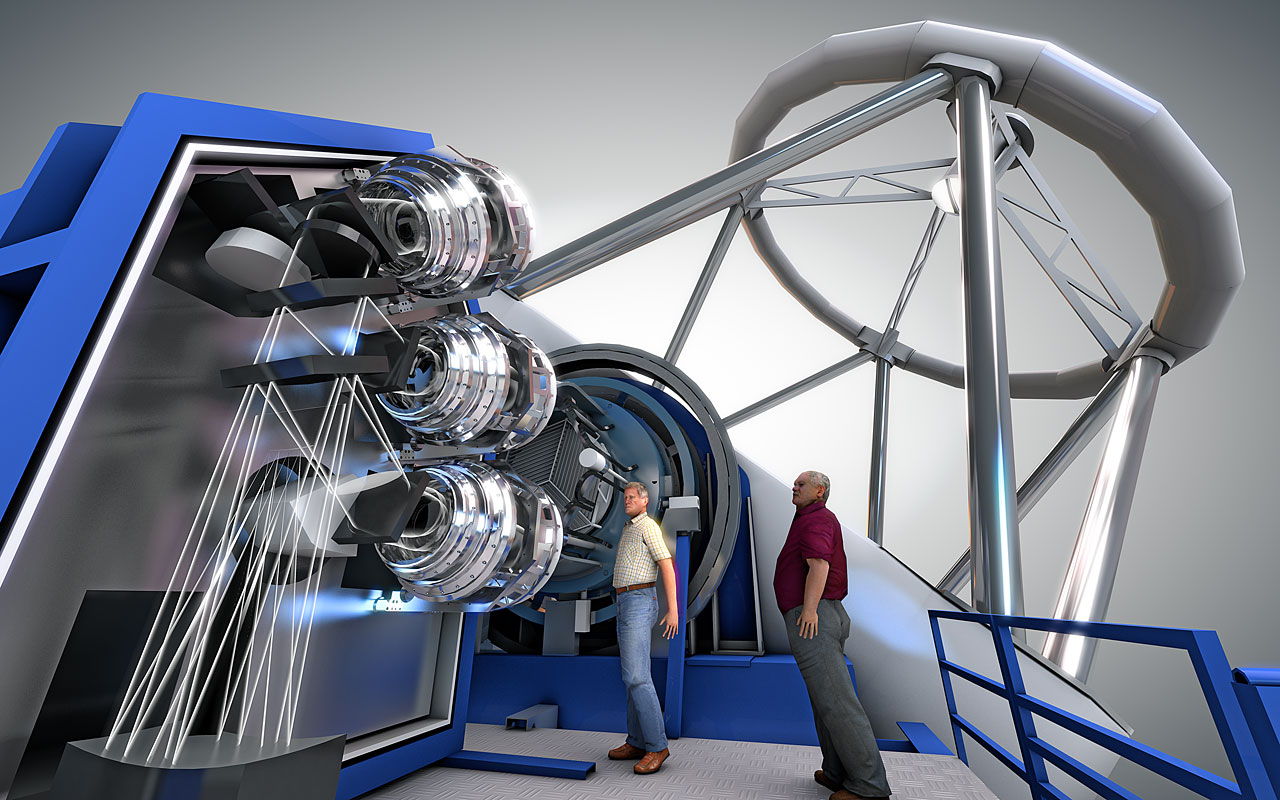MOONS
Multi-Object Optical and Near-infrared Spectrograph
A new instrument is being built for the Very Large Telescope (VLT) at ESO’s Paranal Observatory to reveal part of a hidden history of the cosmos. MOONS, or the Multi-Object Optical and Near-infrared Spectrograph, is a third generation instrument and a multi-object spectrograph. Combined with the power of the VLT, the unique capabilities of MOONS will provide the tools necessary to study galaxy formation and evolution over most of the history of the Universe with unprecedented accuracy.
“Using a fast and very accurate fibre positioning system to feed light into two identical cryogenic spectrographs (with 500 fibres each), MOONS will allow astronomers to obtain optical and near-infrared spectra for about 1000 objects! At the same time!” explains astronomer Oscar Gonzalez of the Science and Technology Facilities Council's UK Astronomy Technology Centre (UK ATC). This institution is taking the lead in developing this unique instrument as part of a consortium formed by institutions across Europe and Chile, including ESO.
The unprecedented capability of MOONS will enable the study of the different mechanisms by which galaxies form and evolve throughout an impressive range of cosmic times, from investigating the properties of millions of stars in the centre of our own Milky Way to millions of galaxies in the early Universe.
When an object moves away from us, the light is shifted to the red end of the spectrum, an effect known as redshift. “MOONS will map these spectral features for millions of high redshift galaxies, allowing astronomers to quantify important properties such as chemical enrichment, the rate of star formation, and the dependance of these properties with environment,” says Gonzalez.
As well as studies of the distant Universe, the infrared capabilities of MOONS will allow astronomers to study the highly obscured regions of the bulge of our galaxy. Studying our own galaxy presents us with the unique opportunity to study all the components of a galaxy on a star-by-star basis. “This is of huge importance in order to understand the details of the processes that take place during the assembly of a prototypical spiral galaxy like the Milky Way,” explains Gonzalez. “We use high-resolution spectra to measure the chemical abundances of certain elements in the atmospheres of stars, in connection with their dynamical properties, to reconstruct the history of events that led a group of stars to reach the characteristics they show today.”
In combination with the power of the VLT, MOONS will observe stars within the Milky Way up to a distance of about 40 000 light-years, looking through the Bulge and Disc to reveal their structure to create a three-dimensional map of our galaxy. Large surveys conducted by telescopes like VISTA provide exceptionally accurate measurements of positioning and transversal velocities for billions of stars in the Milky Way. However, spectroscopy performed by instruments like MOONS will be necessary to measure how fast are stars moving away from us or towards us. MOONS therefore acts as a galactic GPS, allowing us to produce an unprecedented map of our Galaxy.
MOONS will also provide the crucial spectroscopic follow-up for the European Space Agency (ESA)’s Gaia mission and for other ground based optical and near-infrared imaging surveys (VISTA, UKIDSS, VST, Pan-STARRS, Dark Energy Survey, LSST), as well as facilities operating at other wavelengths (ALMA, Herschel, eRosita, LOFAR, WISE, ASKAP). As such, it will fill a critical gap in the astronomical toolkit, particularly in the near-infrared.
MOONS will undoubtedly tackle some of the most compelling astronomical questions such as probing the structure of the Milky Way and tracing how stars and galaxies form and evolve. During its ten-year design lifetime, it is expected to observe on the order of ten million objects.
MOONSThis table lists the global capabilities of the instrument.
|
